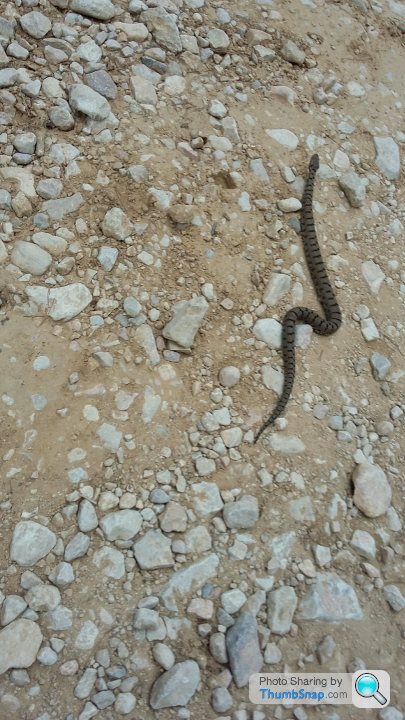Identify this snake?
Discussion
Yep that's as close as I could find, the one I saw is much darker- could it be a young one? I was surprised to find it in the open during the day. It was hissing like a puncture when I saw it and was clearly nervous.
Edit- here's one in action- blimey!
https://en.m.wikipedia.org/wiki/Vipera_aspis#/medi...
Edit- here's one in action- blimey!
https://en.m.wikipedia.org/wiki/Vipera_aspis#/medi...
Edited by truck71 on Saturday 31st October 09:07
Most snakes display a degree of geographical variation in their morphology. That's to say you find that their physical characteristics are variable, larger, smaller, lighter, darker, highly contrasting patternation, reduced patternation etc. These differences may be locally fixed and only slightly different to the neighbouring population or with isolated populations the difference could be very pronounced yet they are all the same species.
Alternatively it could just be a recessive dark morph, a naturally occurring colour variation that reoccurs with in an otherwise nominate colour population.
Either way I'd be confident that it is a European Asp.
Alternatively it could just be a recessive dark morph, a naturally occurring colour variation that reoccurs with in an otherwise nominate colour population.
Either way I'd be confident that it is a European Asp.
Roberty said:
Most snakes display a degree of geographical variation in their morphology. That's to say you find that their physical characteristics are variable, larger, smaller, lighter, darker, highly contrasting patternation, reduced patternation etc. These differences may be locally fixed and only slightly different to the neighbouring population or with isolated populations the difference could be very pronounced yet they are all the same species.
Alternatively it could just be a recessive dark morph, a naturally occurring colour variation that reoccurs with in an otherwise nominate colour population.
Either way I'd be confident that it is a European Asp.
Agree, the lizard eating one is more or less identical. It was right in it's natural habitat which was the foothills of the Luberon mountains. I was very careful where I stepped for the rest of the day!Alternatively it could just be a recessive dark morph, a naturally occurring colour variation that reoccurs with in an otherwise nominate colour population.
Either way I'd be confident that it is a European Asp.
Gassing Station | All Creatures Great & Small | Top of Page | What's New | My Stuff




